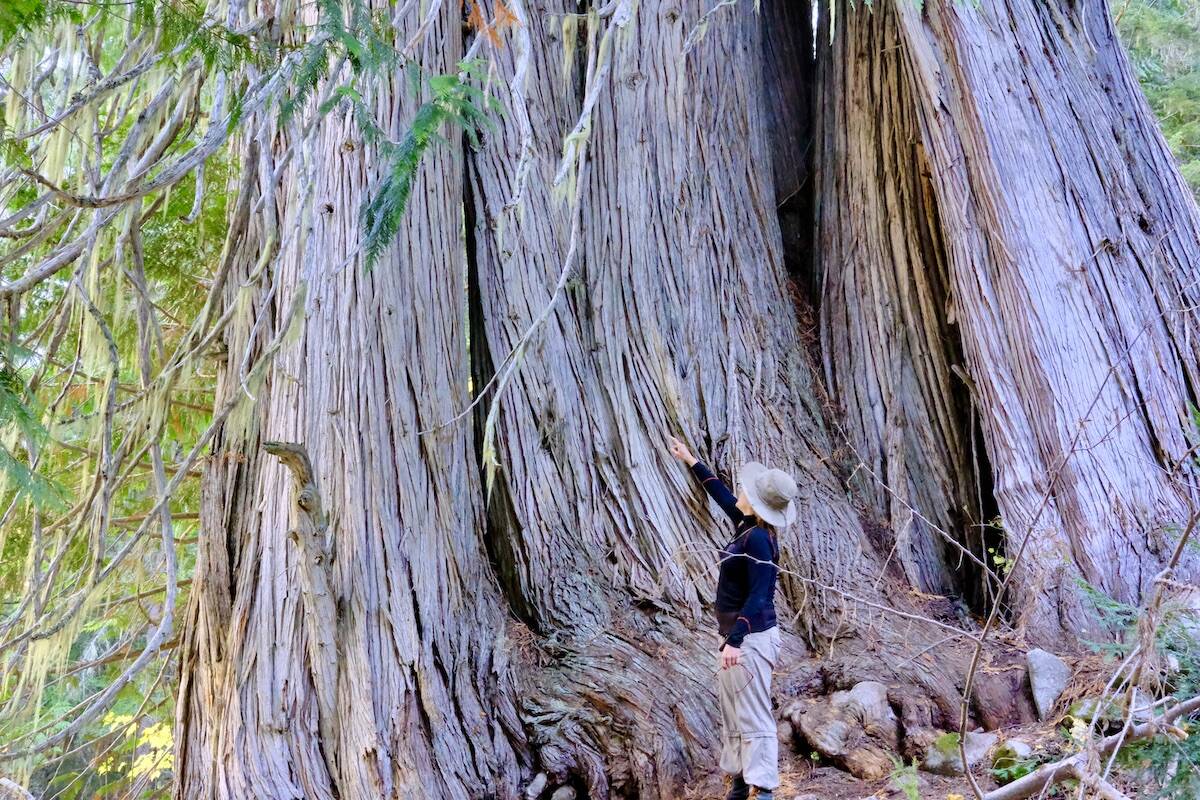By Rochelle Baker, Local Journalism Initiative Reporter CANADA’S NATIONAL OBSERVER
Conservation groups are alarmed that endangered old-growth forests continue to fall three years after B.C. promised to protect the ancient ecosystems and transform the province’s approach to forestry.
The province hasn’t fully met any of the 14 recommendations of the 2020 Old Growth Strategic Review (OGSR), said Torrance Coste, national campaign director for the Wilderness Committee.
The OGSR recommendations urged the immediate deferral of logging in the most biologically diverse at-risk areas, protecting more massive trees while working with and involving First Nations and communities in forestry decisions, and improving public transparency and reporting in the industry.
However, the government has failed to fully defer logging in the key old-growth areas most immediately at risk of being cut down, Coste said.
Conservation groups and many First Nations have repeatedly documented logging in areas identified as priority at-risk deferral areas by the old-growth technical advisory panel in Nov. 2021, he said.
Since the government commitment in 2020, environmental groups doing ground checks have confirmed clear cuts or road building in at-risk hotspots on Vancouver Island and in the B.C. Interior, Coste said.
Additionally, the amount of at-risk forest disappearing is being detected by Forest Eye — a new technological system developed by Stand.earth that relies on satellite imagery to gather data and send out user alerts about forestry operations in the priority areas.
The forestry experts made it clear the province couldn’t risk the loss of any remaining productive old-growth, Coste noted, but logging continues.
“Any old growth inventory map is obsolete the day you make it,” he said. “There’s less old growth in B.C. and Vancouver Island than when we poured our coffee this morning. That’s just how it goes without a real moratorium.”
Such slow progress on the third anniversary of B.C.’s promise to protect ancient forests is a particularly bitter pill after a summer of unprecedented drought and record wildfires, said Jens Wieting, senior forest and climate campaigner with Sierra Club BC.
Old growth is increasingly precious as fires — exacerbated by the climate crisis and industrial logging — have scorched more than 2.2 million hectares of land across the province, he said.
“I’m shocked by the escalating price we are paying for government delays and the loss of benefits only old-growth forests can offer,” Wieting said.
Old growth forests reduce the risk of drought, heatwaves, floods and wildfires and provide habitat for at risk species, he said. Today, only a single spotted owl exists in the wild in B.C. and the province’s endangered caribou populations are also on the cusp of being extinguished as logging continues to undermine critical habitat.
These three years show us that present and future generations will pay an ever-growing price for inaction, and we can’t continue on this path,” Wieting said.
The province announced logging deferrals in April 2022 that covered 40 per cent of the 2.6 million hectares identified by the expert panel in 2021 as the most at-risk, oldest, rarest or most ecologically important in the province.
However, there’s an appalling lack of transparency, Coste said. It’s not clear where priority deferrals are taking place, if they overlap with timber harvesting areas, and how much, if any, old-growth slated for logging has been prevented since 2020, he said.
Nor is it clear how much at-risk old growth has been logged since B.C. announced its new approach in 2020, Coste added.
It’s not for lack of asking by conservation groups or the public for those numbers, Coste stressed.
“We raised these questions to the ministers themselves again and again,” he said.
“If the numbers were in their favour…Why wouldn’t they tell us?.”
Data conclusively showing the deferral process is working while the province negotiates with First Nations to come up with permanent old growth protections would be good news for everyone, he added.
The province doesn’t provide information on where priority old-growth areas have or haven’t occurred to respect the confidentiality of talks between the province and First Nations, the B.C. Ministry of Forests, Lands, Natural Resource Operations and Rural Development told Canada’s National Observer in an emailed statement.
The ministry did not clarify the total amount of logging that has taken place in priority old-growth areas to date before Canada National Observer’s publishing deadline.
Former forestry minister Katrine Conroy previously stated the province would’t impose deferrals unilaterally on First Nations and old-growth logging would continue in territories that did not agree to them.
But conservation groups and First Nations have repeatedly criticized the B.C. NDP for not offering compensation to Nations to defer logging in their territories, putting them in the position of sacrificing critical revenue to protect forests for everyone else’s benefit.
First Nations are at urgent crossroads after rampant wildfires destroyed numerous communities this summer and others are still rebuilding from blazes in the past, said Grand Chief Stewart Phillip, president of the Union of BC Indian Chiefs in the joint press statement.
“The sheer number of forests that we have lost to the climate crisis already, is devastating,” Phillip said, noting the OGSR recommendations were meant as mere stepping stones to greater protections for old-growth forests.
“At this rate, there will be nothing left for our children,” he said.
“The BC government cannot ignore this any longer stop logging our old growth trees and help us start rebuilding in an ethically and environmentally friendly manner.”
Communities across the province are mobilizing for a day of action on Sept. 28 to demand politicians uphold the NDP’s old growth pledge, Coste said.
“People can connect the dots between the biodiversity and climate crisis and irresponsible forest management,” he said. “Thousands remain committed to reminding the NDP of the promises they seem to be hoping we’ll forget.”
READ ALSO: Vancouver Island Indigenous leaders support B.C. plan for old forest preservation
READ ALSO: Vancouver Island forestry workers rally against old-growth deferral

